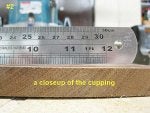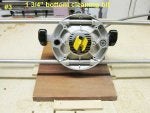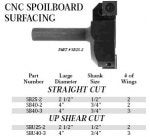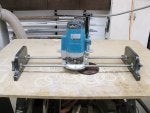Looking at the whole post, this is what I think...
A few have led you in good directions for leveling and straightening a slab. I level slabs with a jig and router, that is like what Mike posted. The leveling of the slab has been covered well. That is not my multiple concerns.
First off, the wood is green. If not kiln dried, it will take about a year to air cure. For a green length to finish at 4' I would add at least 10% to the unfinished length. If you are going for an unfinished, live-edge that is cut across the center of red oak, you will have a nice looking slab with a taper in the width over the four feet length. On how red oak trees grow, it usually has more than a slight taper over 4 feet, if only a 20" cross-section at the base. And no big knots? (An oak actually is mature at about 200 years old.)
For a more educated guess, I go off what one of friends does-- He takes the red oak log and paints the ends with that thick white tree paint. Red oak has open end grain. You can take a piece and blow cigarette smoke through the grain! He'll let it sit for a year to cure. After the moisture content has gone down, he takes about 3-4" off each end, before milling it. Once it is milled, it will open up more grain and will have to dry more.
Because the slab traverses over the center core, add at least 20% to the thickness. The reason for this is that piece of stock from a center cut tends to cup across the center core. If it cups across a 4' length, you might also gt a bit of twist. The thicker it is, the less chance of cupping. That 20% may be needed to get it to your finished thickness and turn out flat. (Because of the core.)
You will see a color change of all variants across the slab. It will have a lighter area at the core at near the outsides. Those different areas of the slab are going to have different densities. (More and less hard, more or less open grained...) This will really show up more when you stain it. It will show a lot of contrast, if that is the look you are going for. You would have to prep it a bit, if you wanted a more even, consistent look to it.
Because the cut planned is across the center, it will not have that classic red oak grain pattern-- meaning, when straight across, instead of quarter-sawn, it will look like more like an edge grain, than that distinctive, somewhat wide, deep, rich, multiple wave looking grain (with those distinctive short flicks in between that) that you think of when you see furnishing made of Red Oak.
If you are not doing a slab and going for a "finished look" and the best look for the grain, this is the wrong direction. The grain of red oak looks best when quarter cut. For the best look, with strength, and resistance to warping over time on thinner stock... do a glueup of 2-1/2 to 3" wide stock while alternating the grain of alternating pieces of stock. Then it will not matter how wide you need it... and have less waste in material.
Just using a center slab out of 20" red oak log? A 20 inch red oak is worth money if sold. Just cutting a center slab of the bottom of the tree is a lot of waste... but it's free right? Taking it somewhere that has a band-saw log mill, you could have it sawn... probably in trade for the off-cuts you are not using. Or at least discounted? There would be a lot of usable lumber left in that.
Was just thinking.















